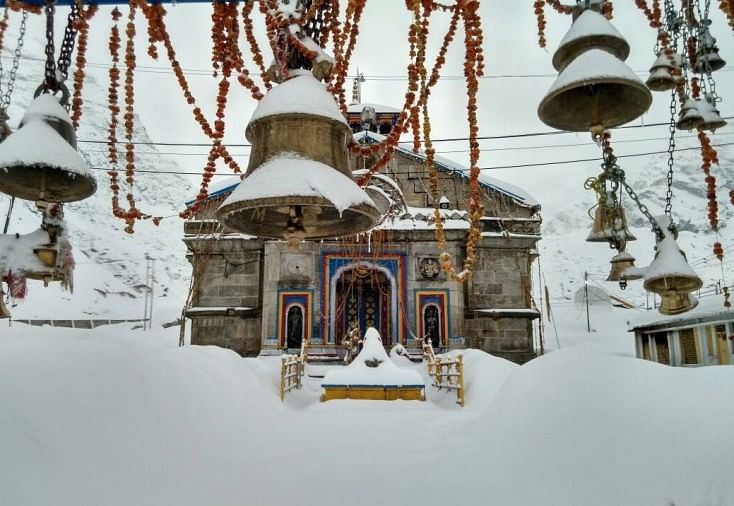KEDARNATH
Kedarnath is a town in Rudraprayag district in the state of Uttarakhand in India and has gained importance because of the Kedarnath temple. It is approximately 86 kilometers from Rudraprayag the district headquarter. It is a Nagar panchayat in the Rudraprayag district. Kedarnath is the most remote of the four Chota Char Dham pilgrimage sites. It is located in the Himalayas about 3,583 m (11,755 ft) above sea level near the Chorabari Glacier, which is the source of the Mandakini river. The town is flanked by snow-capped peaks, most prominently Kedarnath Mountain. The nearest road head is at Gaurikund about 16 km away. The town suffered extensive destruction in June 2013 from the Flash Floods caused by torrential rains in Uttarakhand state.
The name "Kedarnath" means "the Lord of the Field". It is derived from the Sanskrit words kedara ("field") and natha ("lord"). The text Kashi Kedara Mahatmya states that it is so-called because "the crop of Liberation" grows here.
Kedarnath has been a pilgrimage center since ancient times. The temple's construction is credited to the Pandava brothers mentioned in the Mahabharata. However, the Mahabharata does not mention any place called Kedarnath. One of the earliest references to Kedarnath occurs in the Skanda Purana (c. 7th-8th century), which names Kedara (Kedarnath) as the place where Lord Shiva released the holy waters of Ganga from his matted hair, resulting in the formation of the Ganges river.
Kedarnath is located at a distance of 223 km from Rishikesh in Uttarakhand and close to the source of the Mandakini river at the height of 3,583 m (11,755 ft) above sea level. The township is built on a barren stretch of land on the shores of the Mandakini river. The surrounding scenery of the Himalayas and green pastures makes it a very attractive place for pilgrimage and trekking. Behind the town and the Kedarnath Temple, stands the majestic Kedarnath Peak at 6,940 m (22,769 ft) and the Kedar Dome at 6,831 m (22,411 ft), and other peaks of the range.
Kedarnath in the 1860s, with the temple being the prominent structure:
The Kedarnath Temple is closed during the winter months due to heavy snowfall. For six months, from November to April, the palanquin with the Utsav Murti (Idol) of Kedarnath and of the Madhyamaheshwar Temple is brought to the Omkareshwar Temple in Ukhimath, near Guptakashi. Priests and other summer-time residents also move to nearby villages to cope with the winter. Around 360 families of the Tirtha Purohit of 55 villages and other nearby villages are dependent on the town for livelihood.
A View At Kedarnath Village:
Devansh Binjola





A wonderful blog
ReplyDelete